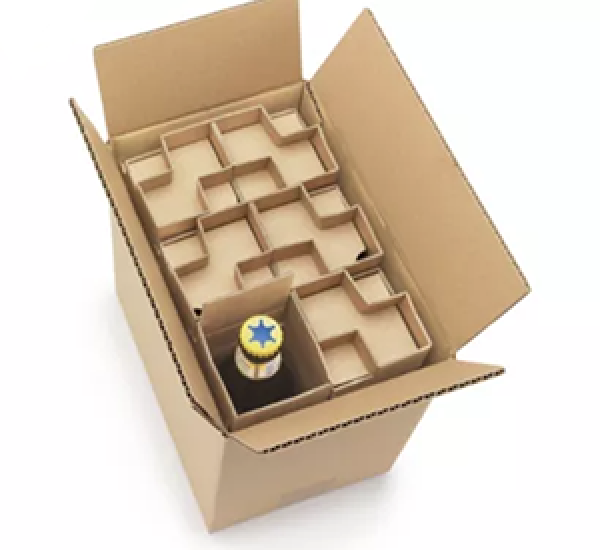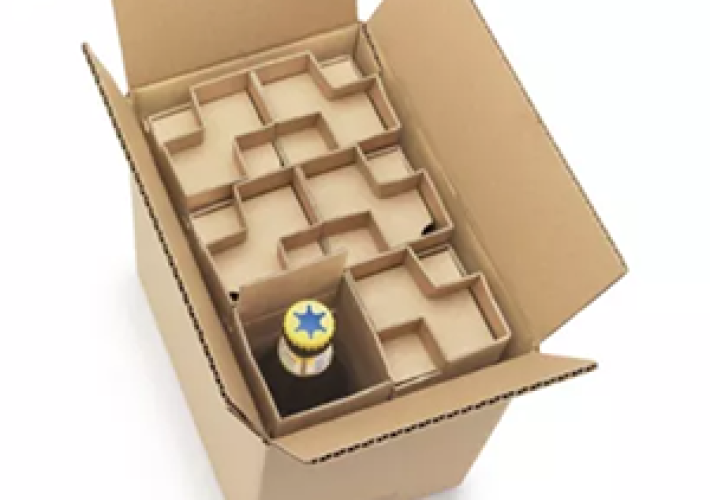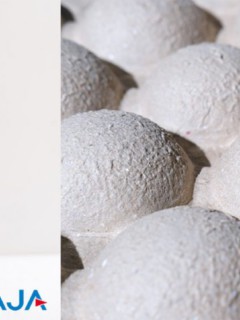Whether it’s a shirt from the online shop, shirts in the store or fruit and vegetables in the supermarket – almost everything seems to be packed and shrink-wrapped in plastic. Even though plastic is often the more sustainable alternative, the material has to struggle with a bad image.
Plastic and its reputation
Regardless of the material, in the ideal case a cycle of recyclable materials is created in which nothing is wasted, but the waste is recycled again and again as a raw material. This works quite well for most waste, but not for plastic.
Plastic islands in the oceans, the export of plastic waste to poor countries and other dramatic images regularly make the headlines and raise awareness of the issue. And yet the amount of waste is increasing from year to year. Only recently, the Federal Environment Agency published the most recent development of packaging consumption. A positive development cannot be observed: In 2017, the waste caused by packaging also increased by 3.09 per cent to almost 19 million tonnes (18,723,000 tonnes). Per capita, that is 226.5 kilograms of packaging waste.
Looking at packaging waste by type of material, it quickly becomes clear that the amount of paper, glass, plastic and metal has been increasing since 2010. The situation is no different for plastics: Their quantity has increased by 79 per cent since 2000.
And by no means all plastics are recycled. Of the total 3.185 million tonnes of plastic waste from packaging, only about half (49.7 per cent) is ultimately recycled.
Are bioplastics the solution?
The question arises of alternatives to conventional plastics. There are several reasons for this in terms of sustainability:
- Plastic harms the environment!
- Plastics are made from crude oil, which is only available in limited quantities. Alternatives from renewable raw materials are needed.
- Plastics are not biodegradable. Every piece of plastic that has ever been produced can still be found somewhere, in the worst case as a plastic island in the world’s oceans or as microplastic at the bottom of the ocean.
- Plastics often contain plasticisers that make the material pliable. Some plasticisers can be absorbed through the food chain or the skin and harm health.
For this reason, research has been searching for alternative products for years and is engaged in the further development of bioplastics.
What are bioplastics?
There are several types of bioplastics, because “bio” in this case has two meanings. On the one hand, it stands for bio-based: Biobased plastics are those that are made from renewable raw materials. But “bio” can also stand for biodegradable: This means that the bioplastic can be composted.
Bioplastics, bioplastics or biobased plastics are plastics that consist mainly or even exclusively of renewable raw materials. However, some petrochemical – i.e. oil-based – plastics also fall into this category if they are degradable. The term bioplastics therefore covers a large category: not all plastics made from renewable raw materials are degradable, while some oil-based plastics, on the other hand, are compostable.
- that are bio-based but not biodegradable.
- that are not bio-based (but petro-based) but are biodegradable.
- which are (predominantly) bio-based and biodegradable.
Use of bioplastics
The European Bioplastics (EUBP) have published current market data: Currently, bioplastics account for less than one percent of all plastics produced annually out of a total of 335 million tonnes. With 1.2 of a total of 2.1 million tonnes of bioplastics, the majority falls into the packaging sector. Forecasts predict a growth of the entire bioplastics market of 25 per cent within the next five years. The reason for this is the high demand for sustainable products.
Therefore, innovative bioplastics such as PLA (polyactide) and PHA (polyhydroxyalkanoate) are seen as the biggest growth drivers. This is because these biopolymers are both bio-based and biodegradable.
The bioplastic PLA
The abbreviation PLA stands for polylactide, which colloquially means polylactic acid. PLA is a polyester that does not occur naturally. Chemically, the bioplastic is made up of several lactic acid molecules bonded together. Through a multi-stage synthesis, (starch) sugar is fermented into lactic acid with the help of lactic acid bacteria and then polymerised into long-chain polylactic acid (PLA). Lactic acid is primarily produced by using maize starch. The polylactic acid (PLA) is used to produce granules that can then be moulded into any desired shape. The bioplastic PLA can then be used in the temperature range from -10 degrees to +40 degrees Celsius.
Advantages such as high scratch resistance, transparency and food approval as well as compostability make the bioplastic interesting for various areas of application. For example, for packaging such as creams and soaps, plastic bags or disposable products.
Advantages such as high scratch resistance, transparency and food approval as well as compostability make bioplastics interesting for various applications. For example, for packaging such as creams and soaps, plastic bags or disposable products.
PLA bioplastic for food
As the bioplastic PLA is food safe, the material is suitable as an alternative to conventional single-use plastic products. especially in view of the upcoming EU ban on single-use plastic products.
From 2021, disposable plastic products such as disposable cutlery, cotton buds, straws, plastic plates and cutlery are to disappear from the market. All single-use plastic products for which there are alternatives are to be banned throughout the EU. With the bioplastic PLA, more sustainable products can be created.
The high volume of plastic waste from packaging in Germany is due to the increasing number of online orders and not least to the smaller portion sizes: Ready-made salads with cutlery in the plastic box, butter and antipasti in plastic, drinking cups at events and much more.
PLA is therefore a real alternative in the food sector.
Compostable according to DIN EN 13432 ?
Anyone wishing to label plastic products as compostable is tested according to EN 13432. Only when all tests have been successfully passed in recognised test laboratories may the designation “compostable” or “biodegradable” be used in advertising. The bioplastic PLA is labelled accordingly and is therefore biodegradable, i.e. compostable, according to the standard DIN EN 13432.
However, this does not mean that disposable cups and plastic cutlery should be disposed of in the compost heap at home. The material can be decomposed in industrial composting plants within 90 days under certain temperature, oxygen and humidity conditions. In nature, conditions are different and the process takes much longer. For this reason, bioplastics should never be disposed of with garden waste or in nature.
Advantages and disadvantages of the bioplastic PLA
The bioplastic PLA obviously has advantages compared to plastics made from petroleum. And of course, the future lies in sustainable plastic alternatives to avoid environmental pollution and increase the recycling rate in the material cycle.
Data from European Bioplastics shows a projected increase in the production of bioplastics, with biobased non-biodegradable plastics accounting for the majority and biodegradable plastics developing only slowly.
PLA bioplastics appear to have advantages over petroleum-based plastics. And of course, the future lies in sustainable plastic alternatives to prevent pollution and increase the recycling rate in the materials cycle.
Data from European Bioplastics shows a projected increase in the production of bioplastics, with biobased non-biodegradable plastics accounting for the majority and biodegradable plastics developing only slowly.
Bioplastics are not always advantageous
The term bioplastics sounds promising: environmentally conscious and sustainable. Even if the name does not suggest this, bioplastics are often criticised. This is because only one of the three groups of bioplastics meets the requirements of resource conservation and biodegradability. And although great expectations were placed on bioplastics a few years ago, they have not yet been fulfilled:
Fossil energies are needed for cultivation and processing in spite of everything. Although less petroleum is used and less CO² is produced during production, use and disposal, the cultivation of raw materials has negative effects on soil and water due to acidification and overfertilisation. The Federal Environment Agency has so far been unable to identify any ecological advantages of bioplastics in comparison.
Moreover, biodegradable plastics usually end up in the recycling plant with conventional plastics and are not disposed of separately. The advantage of biodegradability is thus completely lost. But a biodegradable bin liner also has no place in the biocomposting plant, where they are usually sorted out. There are several reasons for this:
- The rubbish bags are no different from conventional rubbish bags.
- They take a very long time to decompose, significantly longer than normal organic waste. Plastic residues in the compost, however, reduce the value.
- When bioplastics decompose, it does not currently add nutrients or any other value to the compost, which is often used as fertiliser. In this sense, energy is produced that is not used. In a recycling plant, the energy is at least reused in the form of heat.
There is still a lot of room for improvement in the implementation of a sensible concept and the recycling cycle for bioplastics. But despite many points of criticism, bioplastics are a sensible development.
Oil reserves are finite and due to technical limitations only a fraction of them can be easily extracted. By using renewable raw materials, their use can be planned efficiently and CO² emissions are reduced. In addition, more environmentally friendly bioplastics are likely to be developed in the future. If the share of bioplastics increases in percentage terms, it will also be worthwhile to recycle them. With a market share of less than one percent, there is simply not enough recyclable material available for this from today’s perspective.
With regard to future possibilities, the Packaging Act is pushing the use of packaging made from renewable raw materials and recyclable materials.
Sustainability in the packaging industry
Even if the use of bioplastics is not yet fully developed, the use of renewable raw materials and degradable plastics shows a positive development that should be further promoted. Especially when it comes to food packaging, biodegradable plastics are a good way to protect the goods for the short period of time from transport to the consumer.
Waste, especially plastic waste, is a problem that concerns us all. Again and again Possible ways to more sustainability in packaging searched for. But new, more sustainable packaging alone is not the solution. It is much more important to question our personal use of plastic. Plastic bag or reusable bag? Capsule coffee or fresh beans? Consumer behaviour is one of the most important factors.
















